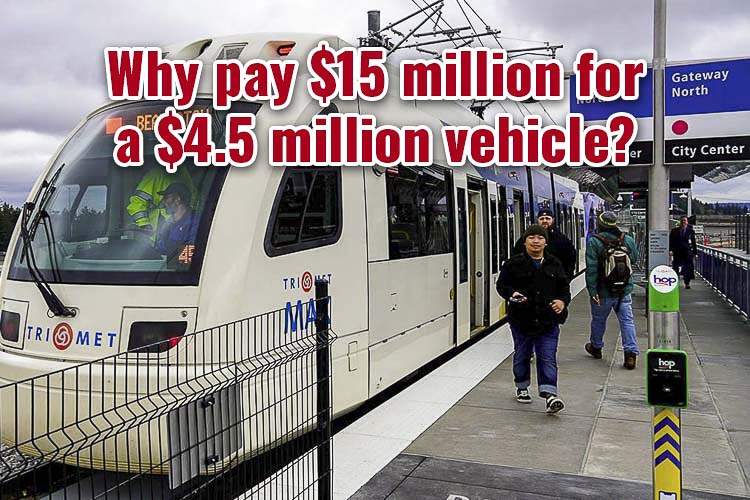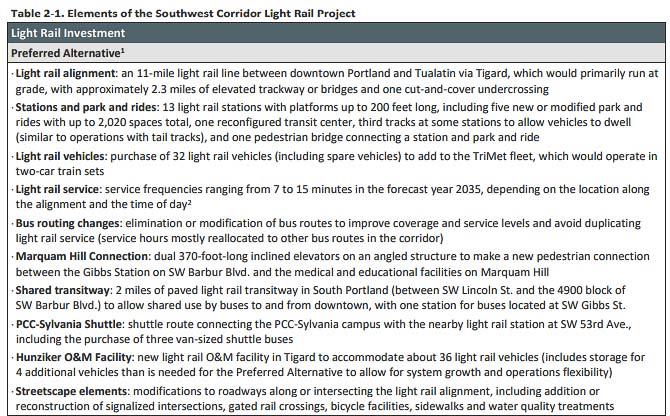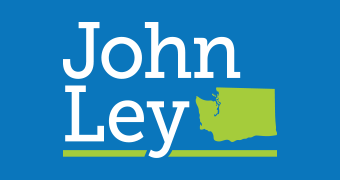TriMet sheds light on IBR cost details for light rail extension
John Ley
for Clark County Today
TriMet recently revealed a 52 percent cost variance on the price of 19 light rail vehicles the agency is demanding the Interstate Bridge Replacement Program (IBR) purchase for a three-mile extension of its MAX Yellow Line into Vancouver. Based on its 2023 financial plan, the cost of the 19 vehicles will range between $190 and $290 million, TriMet spokesman Tyler Graf told Clark County Today.
“It’s important to note that the new light rail vehicles will be needed for the new service provided along the extension of the MAX Yellow Line north and to the new stations identified in the plan,” Graf said.
At $190 million, the cost is $10 million per vehicle. At $290 million, the cost is $15.2 million per vehicle – a large variance.

TriMet’s “A Better Red” project cost $215 million, which includes four new light rail transit (LRT) vehicles to handle increased Red Line service to Hillsboro (Oregon). The price per vehicle is $4.5 million, according to Graf.
Why do light rail train cars cost $4.5 million each for the Better Red project, but between double and triple that amount when submitted to the IBR? Additionally, why were only four new vehicles needed for a 10-mile extension of the Red Line, but 19 are needed for a 3-mile Yellow Line extension?
The TriMet shell game
Critics suggest that it appears TriMet is playing a shell game, shuffling projects and orders for replacing LRT vehicles that are at the end of their useful life by getting someone else to pay.
In 2012, Siemens announced a $73 million TriMet order for 18 new generation S70 LRT vehicles. The price per vehicle was $4.055 million. The first train cars were to be delivered by August 2014.
TriMet planned to purchase 32 LRT vehicles for its Southwest Corridor MAX project, an 11-mile new line. It included 13 new stations at a proposed cost of $2.9 billion. The Southwest Corridor project was rejected by voters in November 2020.
Wikipedia reports an additional order was announced in 2018. “The initial order, finalized in July 2019, was for 26 cars, but the contract includes options for additional cars, for service expansion and the proposed Southwest Corridor MAX line, if built.” The order was reportedly increased to 30 vehicles in June 2021.
In October 2023 it was reported TriMet had ordered 30 new light rail vehicles. “We’re bringing on 26 of them to replace our aging first-generation trains, which are gradually being retired,” TriMet’s website says. “Four additional trains are being purchased for our A Better Red MAX Extension and Reliability Project, for a total of 30 new MAX trains on our rail system beginning in early 2024.”
TriMet currently has 145 light rail vehicles. Their oldest Type 1 vehicles (26) arrived around 1986 and are approaching 40 years of service. An additional 52 Type 2 vehicles began arriving in 1997. Roughly half TriMet’s LRT fleet is at or very near the end of their useful life.
It would appear TriMet is seeking to get the IBR to pay for 19 of the recently delivered new vehicles and/or future replacement vehicles. That begs the question: Will the IBR be paying for LRT vehicles for use in other parts of the TriMet system that have nothing to do with the Interstate Bridge project?

The IBR appears to be accepting the pricing and the number of vehicles TriMet is demanding, without doing any due diligence. The shell game works as long as nobody asks questions nor digs too deep. The transit agency expects to burn through nearly $1.1 billion in cash reserves over the next decade.
But paying $15 million for a $4.5 million MAX vehicle could seem excessive to even the most casual observer, who might ask where is the federal oversight? Where are the Washington legislators who are being asked to pay for one quarter of the cost? This assumes the federal government kicks in half, and Oregon pays the other one quarter of the cost.
Southwest Washington taxpayers have already expressed concerns about light rail coming into Clark County. Paying an excessive price, as well as purchasing an elevated (or unnecessary) number of vehicles, will seemingly only add to their desire to say “No Light Rail” and “No Tolls!”


